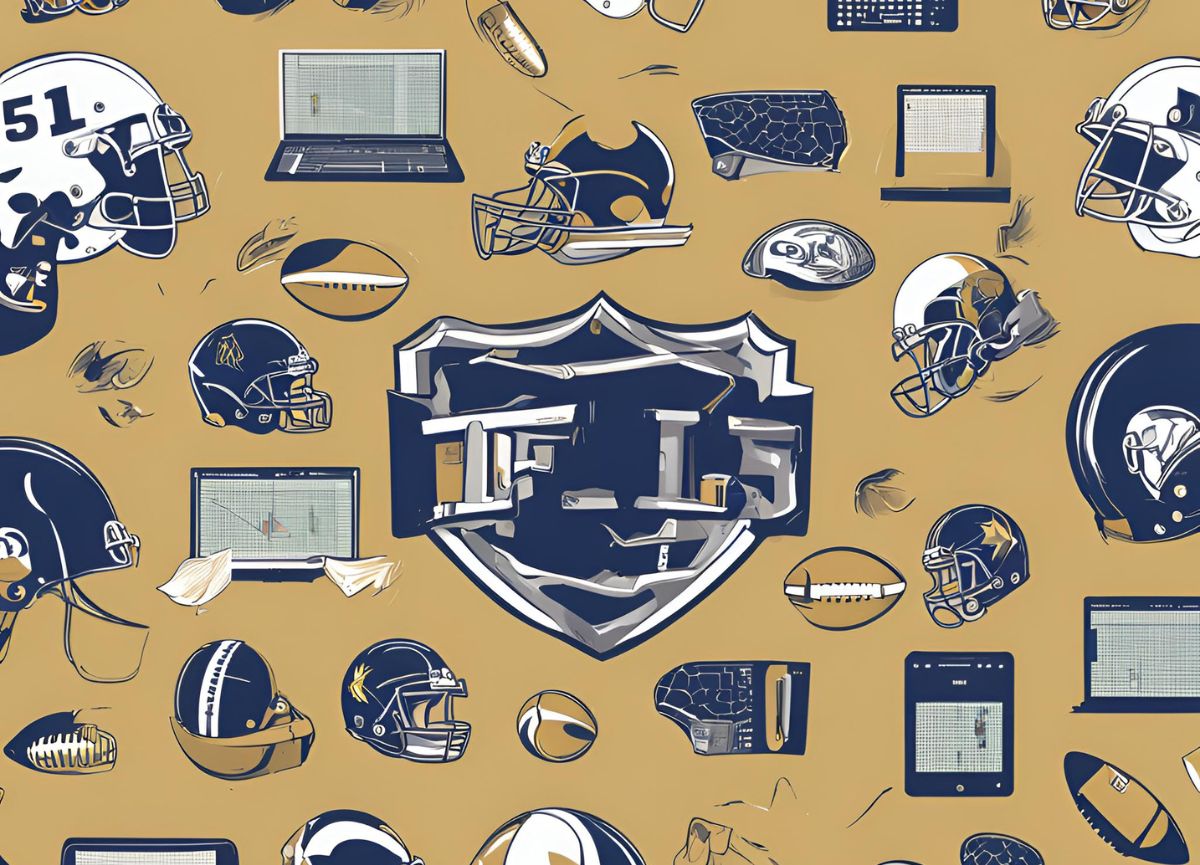Keynotes
- Technology enhances player performance and safety through analytics, wearables, and improved equipment.
- Officiating accuracy and fan engagement have improved via instant replay, HD cameras, and interactive experiences.
- Balancing technological innovation with traditional aspects of the game remains an ongoing challenge.
In recent years, technology has revolutionized American football, transforming the sport from its traditional roots into a high-tech spectacle.
This evolution has touched every aspect of the game, from player performance and safety to fan engagement and the overall viewing experience.
Let’s explore how technology has reshaped America’s favorite sport.
Player Performance and Training
Modern technology has significantly enhanced player performance and training methods.
Teams now utilize advanced analytics and wearable devices to track player movements, speed, and physical condition.
GPS trackers and accelerometers embedded in players’ equipment provide real-time data on their performance, allowing coaches to make judgments about player rotations and training regimens.
Virtual Reality has become an invaluable means for player training.
Quarterbacks can now practice reading defenses and making split-second decisions in a simulated environment without risking physical injury.
This technology allows players to gain additional mental repetitions, improving their decision-making skills and reaction times.
Injury Prevention and Player Safety
The NFL has made significant strides in player safety through technological advancements.
One of the most notable improvements is in helmet technology.
Modern helmets are equipped with sensors that measure the force of impacts, helping teams identify potential concussions and other head injuries more quickly.
The league has also implemented a comprehensive injury surveillance system that uses artificial intelligence to analyze vast amounts of data.
This system helps identify injury trends and develop methods to reduce the risk of injuries on the field.
Officiating and Instant Replay
Technology has dramatically improved the accuracy of officiating in the NFL.
In 1986, The introduction of instant replay and its subsequent refinements allowed officials to review controversial calls and ensure fair outcomes.
High-definition cameras positioned throughout the stadium provide multiple angles of each play, enabling referees to make more informed decisions.
In recent years, the NFL has introduced additional technologies to assist officiating, such as the use of RFID chips in footballs to determine precise ball placement and goal-line technology to confirm touchdowns.
Fan Engagement and Viewing Experience
The impact of technology on the fan experience has been transformative.
High-definition broadcasts, coupled with advanced graphics and augmented reality, provide viewers with an immersive experience.
Fans can now access real-time statistics, player tracking data, and predictive analytics during live games, enhancing their understanding and enjoyment of the sport.
Mobile apps and social media platforms have created new ways for fans to engage with their favorite teams and players.
Fantasy football, powered by sophisticated algorithms and real-time data feeds, has become a cultural phenomenon, further deepening fan engagement with the sport.
Stadium Technology
Modern NFL stadiums are technological marvels.
Many venues now feature massive high-definition video boards, interactive mobile apps for in-stadium navigation and concessions, and high-speed Wi-Fi networks.
Some stadiums have even introduced mixed reality experiences, allowing fans to view real-time player stats and replays through their smartphones or special glasses.
Coaching and Game Strategy
Coaches now have access to an exceptional amount of data and analytical tools.
Tablet computers on the sidelines allow coaches to review plays instantly and make strategic adjustments in real-time.
Advanced analytics and machine learning algorithms help teams identify patterns in opponent behavior, informing game plans and play-calling decisions.
Challenges and Controversies
While technology has certainly improved many elements of American football, it has also introduced new challenges and controversies.
Some argue that the reliance on technology has slowed down the pace of the game, particularly with frequent replay reviews.
There are also ongoing debates about the balance between using technology to enhance the game and maintaining the human element that makes sports unpredictable and exciting.
The Future of Football Technology
As we look to the future, emerging technologies promise to revolutionize the sport further.
Innovations in areas such as AI, 5G connectivity, and biometric monitoring are likely to push the boundaries of what’s possible in player performance, fan engagement, and the overall football experience.
Conclusion
Technology has undeniably transformed American football, enhancing player performance and safety, improving the accuracy of officiating, and revolutionizing the fan experience.
As the NFL continues to embrace technological innovations, the sport will likely evolve in ways we can only imagine.
While these advancements bring new challenges, they also offer exciting possibilities for the future of America’s favorite game.
The ongoing integration of technology in American football represents a delicate balance between tradition and innovation.
As the sport continues to evolve, it will be crucial for the NFL to harness the power of technology while preserving the core elements that have made football a beloved part of American culture for generations.




